Listen to Rula’s review of Saruni Rhino and being the first ever guest to stay and take part in black rhino tracking on foot.
Listen to Rula’s review of Saruni Rhino and being the first ever guest to stay and take part in black rhino tracking on foot.
The Great Wildebeest Migration is undoubtedly one of nature’s most spectacular events, encompassing the trials and tribulations of millions of wildebeest and other migratory animals on their quest for lush, green grass and fresh water. It’s the ultimate journey of life and death – so why would you want to miss it?
Going on a migration safari can be costly, and naturally, you want to make sure that you get full value for your money – and that’s where HerdTracker comes in.
HerdTracker is a Google map giving you accurate, weekly updates of where the wildebeest herds are at this present time. We receive our updates from pilots who fly over the Serengeti and Masai Mara, safari guides, Tanzania National Parks Authority rangers and lodges.
![]()
The HerdTracker map giving you the precise location of the wildebeest herds.
Created by Discover Africa, HerdTracker is the ultimate prediction tool to help you see the wildebeest herds live.
It hasn’t taken long for HerdTracker to be noticed. British news organisations such as The Daily Mail and The Telegraph have both featured HerdTracker in their online publications.
You can also follow HerdTracker on X Social Platform (Formerly Twitter) – spearheaded by Conrad, world’s first tweeting wildebeest. Conrad will give you weekly updates of where you can find him and the wildebeest herds as he shares life experiences during the great wildebeest migration
![]()
Follow Conrad the tweeting wildebeest daily by using the Twitter handle @HerdTracker
You can also find a migration map with monthly predictions by our East Africa expert Carel Verhoef – who used previous years’ migratory patterns and real-time updates received from pilots, rangers and safari guides in the Serengeti to estimate where the wildebeest herds will be in the future.
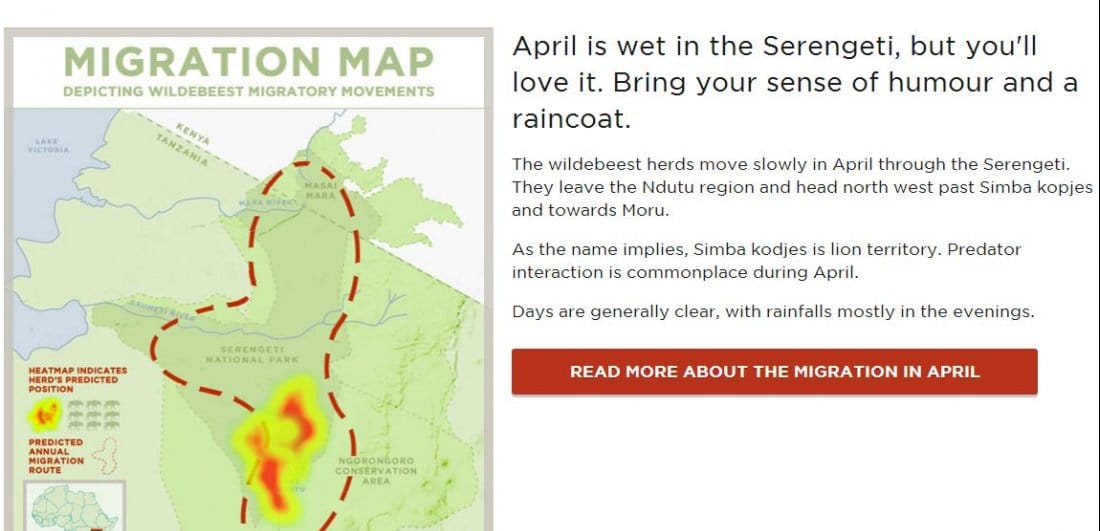
The Migration Map with monthly predictions courtesy of our East Africa expert Carel Verhoef
If you’re interested in seeing the wildebeest herds during the great migration, then HerdTracker is the perfect tool for you. There’s no reason why you should miss it!
Africa is the second most populated continent but its air traffic only accounts for 3% of the global total. That doesn’t mean the Dark Continent is lacking its share of weird and wonderful airliners. In this post, guest contributor, Russell Jarvis breaks down a few of the African airline invalids as well as the movers and shakers.
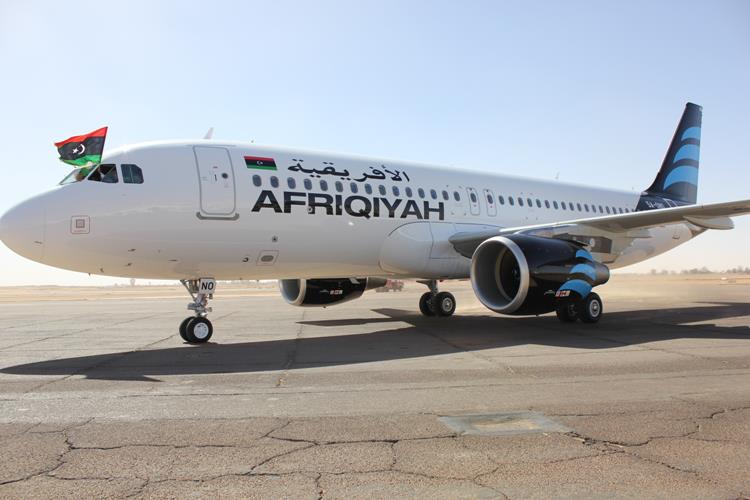
It’s onwards and upwards for the national carrier of Libya which used to have 9.9.99 arranged in a square formation as its logo. The numbers stood for the date the African Union was founded, but since Gaddafi’s fall, it’s thankfully rebranded. The name “Afriqiyah” comes from the Arabic word for African.
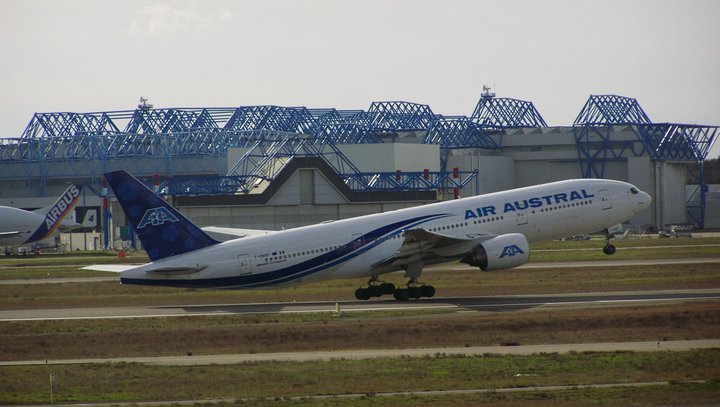
Reunion’s flag carrier doesn’t even fly to Australia… or Austria for that matter. Air Austral takes its name from the French/Latin word for “Southern”. Why you ask? Well Reunion is in the Southern Hemisphere and it’s an “overseas department” of Northern Hemisphere located France.
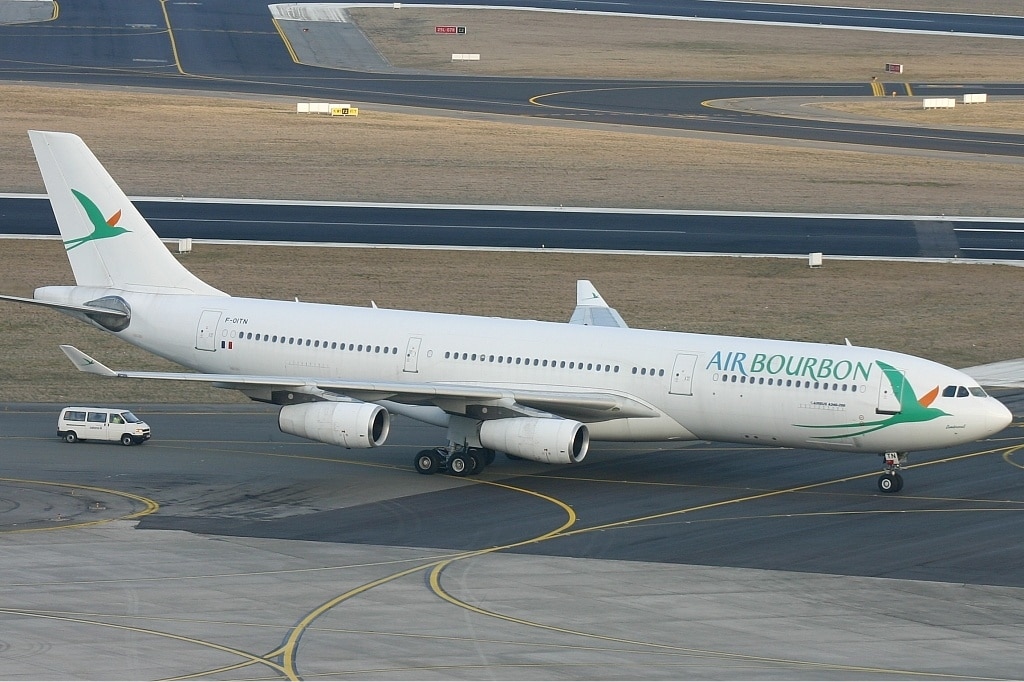
Founded in Reunion in 2002 and ceased operations in 2004, Air Bourbon’s existence was short lived but that’s not to say the pilots were too busy sipping on the fine whiskey that bears the same name as their airline. Financial problems forced Air Bourbon to liquidate and their sole aircraft (an A340-200) was re-commissioned to fly under a new name – Air Comores International. Sadly, this venture never came to fruition.
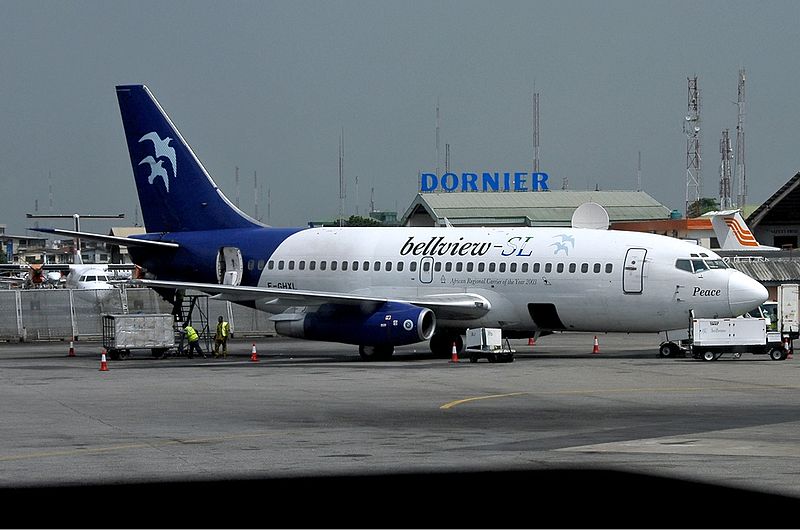
Sounds more like a dodgy neighbourhood than a credible carrier but Bellview Airlines was the name of a Nigeria based carrier that started as a Lagos travel agency in 1992. It had a pretty good run even flying to London and Johannesburg but it’s since gone bust (1999).
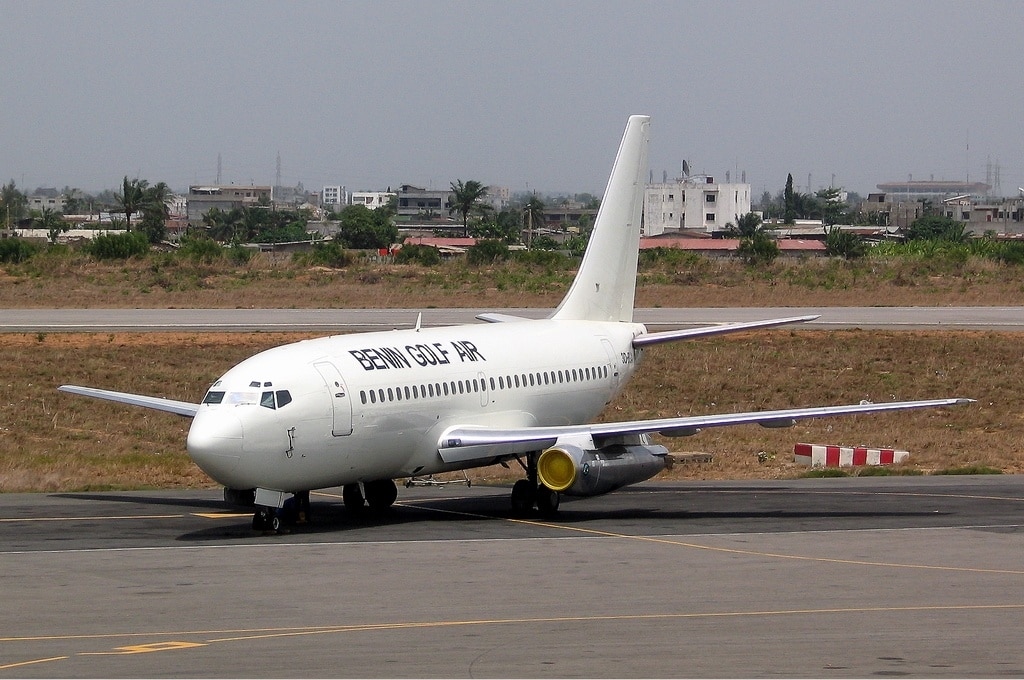
The now defunct Benin Golf Air never did transport avid golfers to dream courses around the globe. Rather it took its name from the Gulf of Guinea – the region in which it operates in West Africa (“Golfe” is French for gulf). Even when it was operational it was on the blacklist of carriers banned from operating in EU airspace.
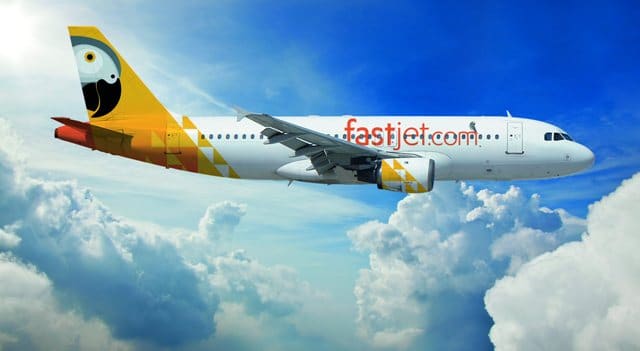
It might be unknown to you for now but that’s about to change as fastjet (yes it’s with a small ‘f’) is set to launch in South Africa in the very near future with nonstop flights between Johannesburg and its base; Dar es Salaam.
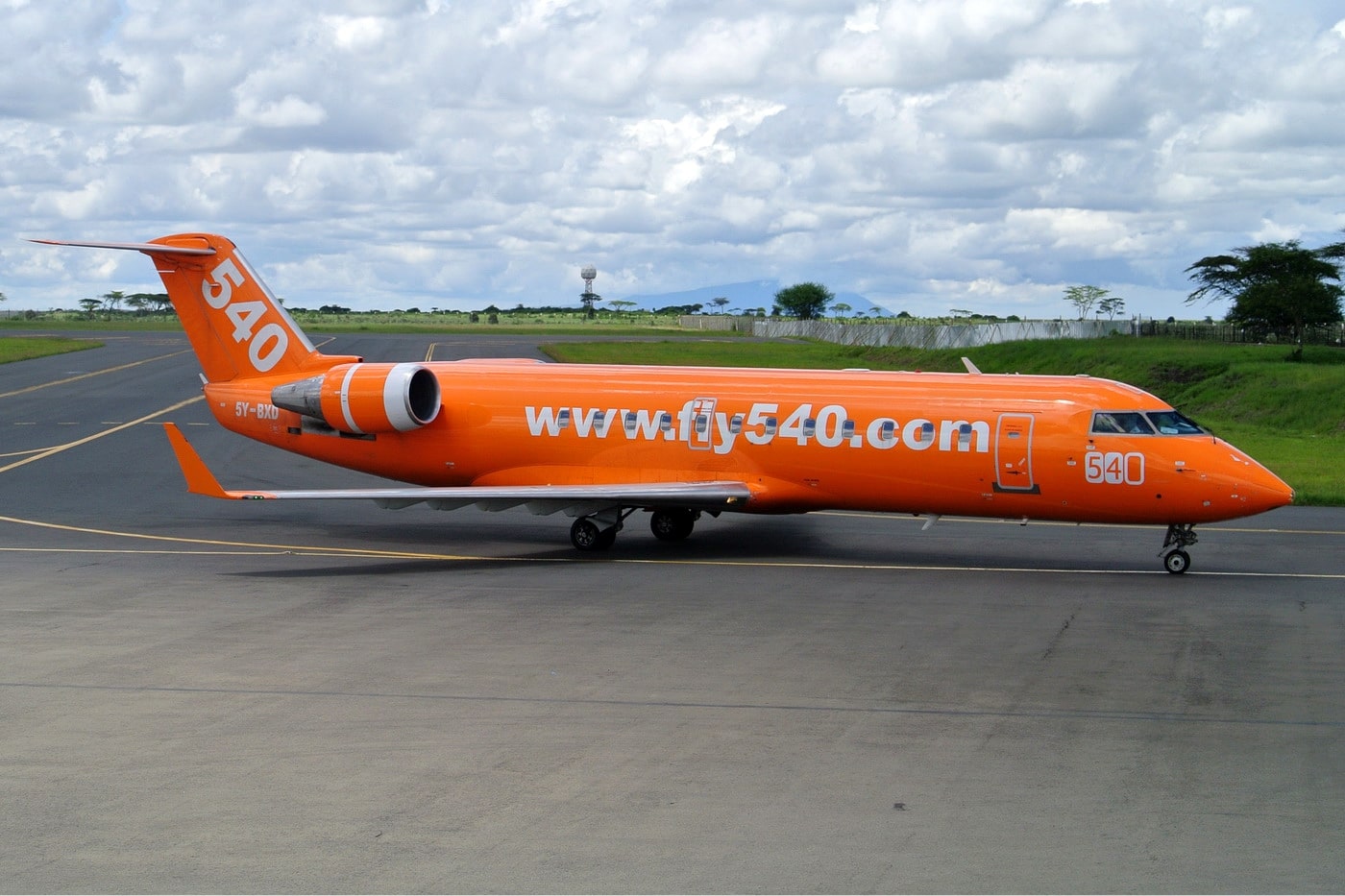
Taking its name from the low-priced Sh5, 540 flight deals it launched with, Nairobi based Fly540 boasts a current fleet size of 16 aircraft. The airline was sold in 2012 to form the basis of the new Pan-African airline fastjet, and its services are expected to be migrated to fastjet.
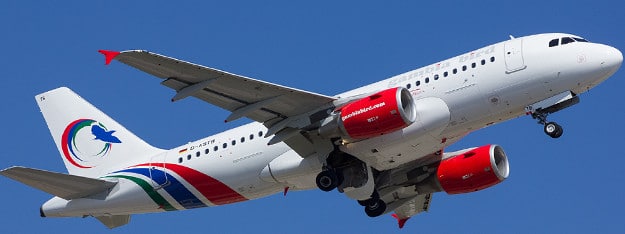
Oddly enough, Gambia Bird is a German owned carrier functioning from its hub at Banjul International Airport in Kanifing, The Gambia since 2012. Their fleet of two aircraft is leased from FlyNext and they operate scheduled flights in West Africa as well as flights to London and Barcelona.
I won’t blame you if by now you’re thinking “Huh?!?” but I can promise you the curiously named Jubba Airways is real. It was founded in 1998 by Canadian based Somali entrepreneurs and it’s still going strong with its fleet of four aircraft and ten destinations.
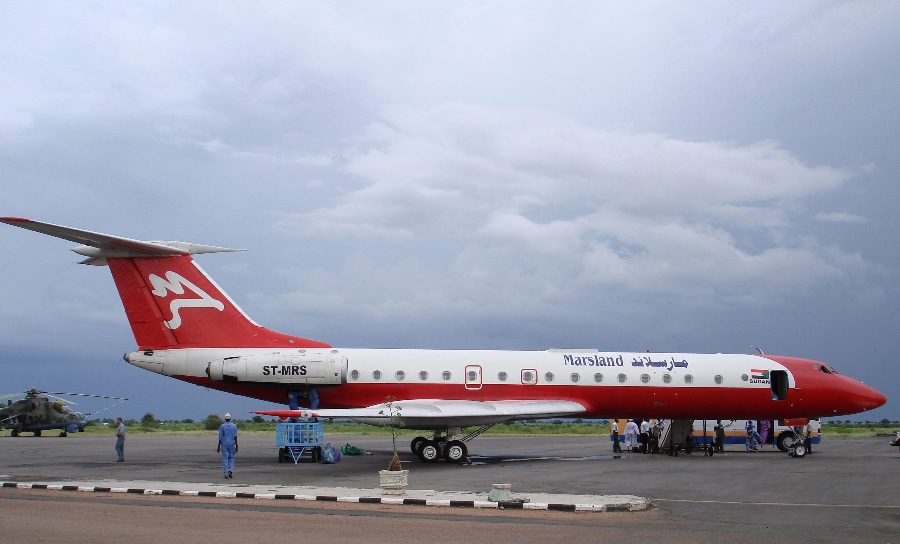
The Sudanese carrier with the celestial sounding name doesn’t offer intergalactic flights like Sir Richard Branson’s Virgin. Their fleet of four planes offer scheduled flights in Sudan as well as East Africa (Nairobi).
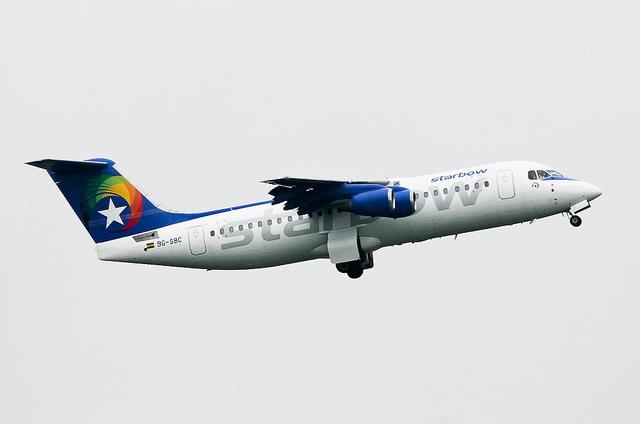
If you were thinking they also sell cider, flour or pilchards you’d be wrong. But don’t be down on yourself; after all, their name does seem fitting of some random consumable. Starbow is a Ghanaian airline flying from their hub in Accra to domestic destinations in Ghana. They won’t be launching in South Africa anytime soon but they are looking at branching out to more destinations in West Africa.
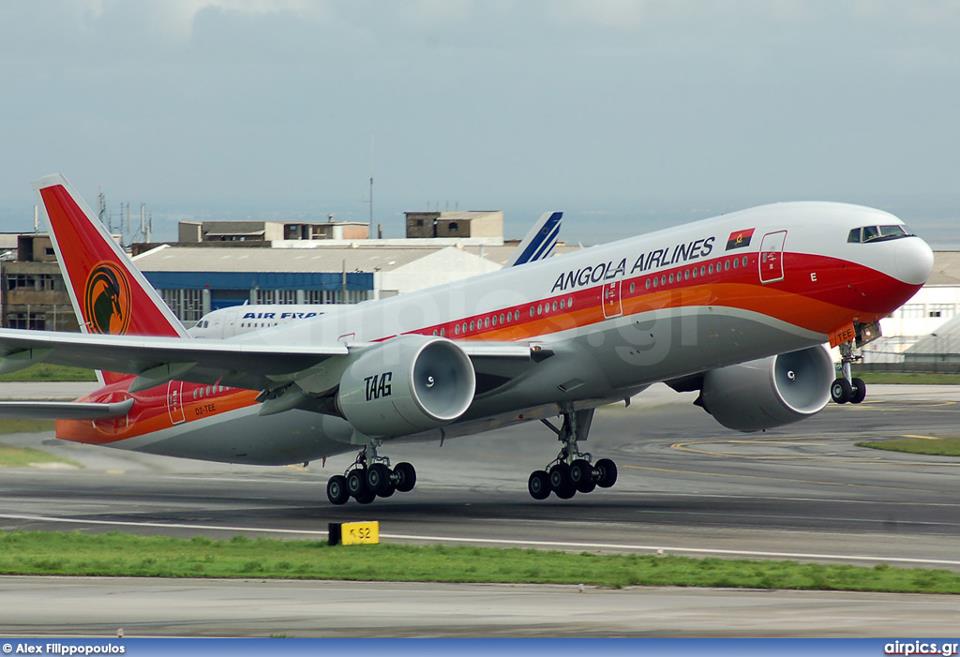
Portuguese carriers are no stranger to shortening their long names to more functional acronyms and TAAG Angola (commonly referred to as “TAG”) is no different to the likes of TAP Portugal and LAM Mozambique. Based in Luanda, the airline operates domestic services within Angola, as well as medium-haul services in Africa and long-haul services to Brazil, Cuba, China and Portugal.
Some of these airlines cease to exist which is why they are African airlines that you’ve probably never heard of. Fortunately a handful of them have gone on to succeed and take on new heights, so consider them the next time you plan a trip into Africa.
About the author:
Russell has lived all across South Africa, but chose the Mother City as his home. He is passionate about Cape Town and enjoys sharing all that the captivating city has to offer. Russell also enjoys writing which is why deciding to work at Travelstart as a content strategist was the perfect match.
Relais & Châteaux’ annual meeting was held in Turin from 4 to 6 November. It brought together more than 500 Owners, Maîtres de Maison, and Grand Chefs, from almost 60 countries, to discuss the important issue of ‘Shared Emotions’.

Above: Relais & Chateaux New Members. Photo by Daniele Ratti
After Lisbon in Portugal in 2011, Jaume Tàpies, Chairman of the Board of Relais & Châteaux, invited the men and women who are the ‘backbone’ of the Association to Turin, from 4 to 6 November.
This reunion provided the opportunity to take stock of what has been a particularly busy year: the entry into the Guide of 36 properties, 12 new Grands Chefs and 5 new destinations with the creation of new Routes to Bonheur, gastronomy that is celebrated more than ever before (Dîner des Grand Chefs au Gotham Hall à New York, Lunch on the Lawn, pop-up restaurant at the 26th Biennale des Antiquaires), a new-look guide which brings the paper and online versions closer together, the creation of new Lys offers. What unites all this is a desire to share excellence and emotions. And that is what happened at this 38th congress.
All the ingredients were there to ensure that the theme, ‘Shared Emotions’, elicited heart-felt and in-depth discussions and the sharing of experiences: a plunge into the heart of the culture and gastronomy of Italy with, as its culmination, a gala dinner given at the Venaria Reale with 15 Italian chefs, Fine Dining by Relais & Châteaux with contributions by Grands Chefs Thomas Keller (New York City), Andrew Fairlie (Scotland) and Jacques Chibois (Grasse), a meeting with Salvatore Ferragamo, Owner of Il Borro and 2013 Ambassador, the experience of a company director of what is a jewel in France’s luxury crown in the person of Yves Carcelle, CEO of Louis Vuitton, the passionate enthusiasm of Angelo Gaja, one of Tuscany’s most famous winegrowers, the vision of the world’s top economic authority, Christine Lagarde, former French Economy Minister and now Managing Director of the International Monetary Fund.
This wealth of experience, these discussions and these moments of exchange gave food for thought and inspiration to the 500 members of Relais & Châteaux who had come from all around the world. And the promise that our guests will share with us, in 2013, original and intense new experiences.
<!–Discover Africa’s South African Relais & Chateaux accommodation options:Ellerman HouseThe Marine HermanusTsala Treetop LodgeThe PlettenbergKurlandCamp JabulaniSingita Ebony LodgeSingita Boulders LodgeSingita Sweni Lodge–>
Here is our carefully curated list of airlines that are flying in and out of Africa right now and the ones that will be operating in the next few months. If you would like to start planning your next trip today fill in our quick enquiry form and one of our African travel experts will be in touch.
Botswana
Qatar Airways
Air Botswana
Airlink
Kenya Airways
Turkish Airlines
Swiss
Lufthansa
Kenya
Ethiopian Air
Kenya Airways
British Airways
Qatar Airways
British Airways
KLM
Jetblue
Air Canada
Mauritius
Turkish Airlines
Air France
KLM
Mozambique
Qatar Airways
Ethiopian Air
Lufthansa
Airlink
American Airways
LAM
Kenya Airways
Egypt Air
Turkish Airlines
British Airways
South African Airways
Liberia
Swiss
Namibia
Qatar Airways
Lufthansa
Swiss Airlines
Turkish Airlines
Airlink
Delta
Gulf Air
Ethiopian Air
British Airways
Rwanda
KLM
Lufthansa
Air Canada
Ethiopian Air
United Airlines
Brussels Airlines
Turkish Airlines
Kenya Airways
Qatar Airways
Rwanda Air
South Africa
American Airlines
KLM
Qatar Airways
United Airlines
Turkish Airlines
Airlink
Delta
Kenya Airways
Swiss
Iberia
Brussels Airlines
Air France
Tanzania
Kenya Airways
Ethiopian Airways
Uganda Airlines
Fly Safair
Qatar Airways
American Airlines
KLM
Turkish Airlines
British Airways
Lufthansa
Air Tanzania
Uganda
Brussels Airline
United Airlines
Qatar Airways
Jetblue
Kenya Airways
Air France
Rwanda Air
KLM
Ethiopian Air
Zambia
Turkish Airlines
Ethiopian Air
Qatar Airways
Airlink
Rwanda Air
Brussels Airways
Zanzibar
Turkish Airlines
Swiss
Qatar Airways
Precision Air
British Airways
Ethiopian Air
Brussels Airlines
Auric Air
KLM
Zimbabwe
Kenya Airways
Rwanda Air
Kenya Airways
Airlink
Fastjet
Airlink
Qatar Airways
Air Tanzania
Jetblue
Ethiopian Air
British Airways
We’ve had a very successful year at Discover Africa. Here are a few of 2018’s travel trends and some insights for 2019….
South Africa, Botswana and Namibia were our top Southern Africa destinations in 2018. Great infrastructure and ease of travel were contributing factors. This trend will likely continue in 2019, but with a twist…
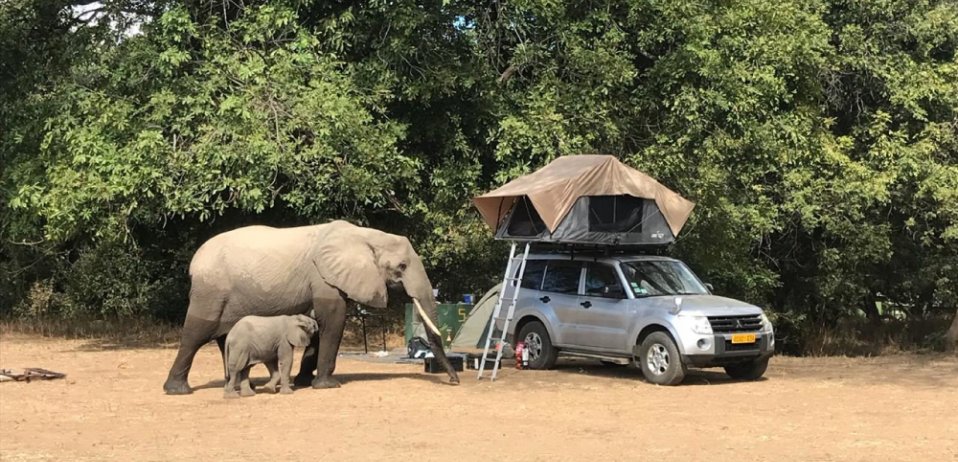
Mana Pool National Park, Zimbabwe
Global social and political perceptions and attitudes of Africa as a travel destination will continue to change. Destinations that have suffered political and social strife in the past are becoming increasingly popular such as Zimbabwe and to the east, Rwanda and Ethiopia.
While safety is still of concern, people are approaching travel to Africa with increasingly open minds and will be richer for the experience. We’ll advise you on where to go for an adventure of a lifetime and peace of mind, obligation free.
As East Africa and Great Migration experts, we send countless visitors to witness the Wildebeest Migration each year. The Serengeti in Tanzania was the most visited area and we saw a greater number of travellers choose the calving season leg of the migration as the best time to go. This is likely because of favourable rates during the beginning of each year.
Kenya also received its fair share of visitors although the river crossings happened later in 2018 due to unseasonal rains in the Serengeti. According to our HerdTracker app, the majority of herds are already back in the Serengeti.
Travellers are making the most of their trip to Africa by visiting as many destinations as possible and we’re likely to see more of this in 2019. For example, travellers coupled Chobe National Park, the Okavango Delta and Victoria Falls in one extended Botswana safari. For those with ample budget, a combination safari to Namibia and South Africa, or Kenya and Rwanda/Uganda was the norm.
By combining destinations into your itinerary, you’ll get a much more well-rounded experience. Let us create the perfect bespoke safari for you here.
Family travel increased significantly in 2018. Favourable exchange rates mean that the whole family gets to experience the best of Africa. Whether you have young children or want to go on a safari road trip with your older kids, there’s something for everyone.
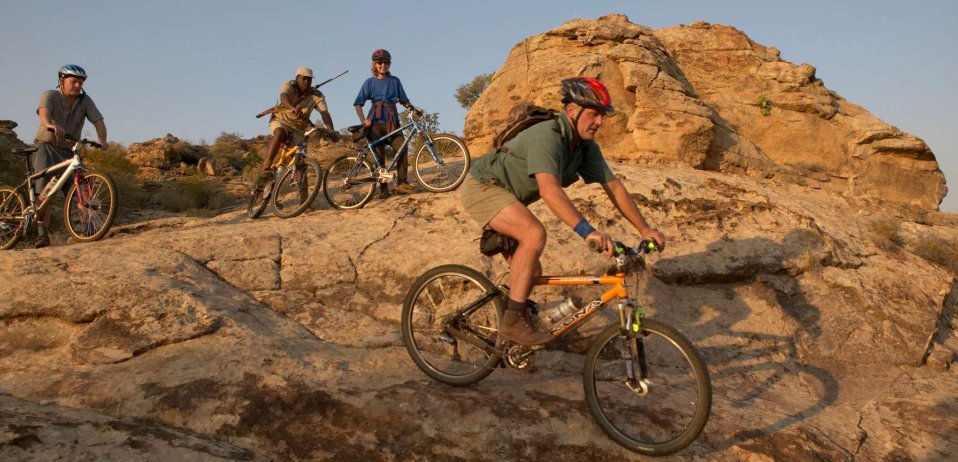
This year, solo travellers comprised mostly of photographers travelling to witness the Great Migration. However, 2019 will see an increase in solo adventurers looking for something other than a traditional safari. With so much to experience from gorilla trekking to beach activities, 2019 will be the year of unusual activities.
![]()
While most of the camps and lodges we send guests to are conservation-oriented and community-driven, this wasn’t at the forefront of our enquiries.
2019 will most certainly see a greater interest in eco-friendly accommodations, volunteerism and kind-to-the-planet travel.
The sheer diversity of flora, fauna and humanity in Madagascar makes this an excellent island destination to visit in 2019. Travel to Madagascar slowed down significantly in 2018, but forecasts predict that tourism volume will increase in 2019. Visit our travel guide to Madagascar to find out what you can expect from this fascinating destination.
Feature image: SA Tourism
Our story started way back in 1976, when founder Steve Conradie’s grandfather Henry took him to the Kruger National Park for the first time.
Back in those days, there were no fences around the camps, and hyenas came right up to the rondawels at night, sniffing for leftovers. Once, Steve fell asleep at a window, waiting to see them. He was woken by the stench of a hyena’s breath, its jaws just centimetres from his face. Instead of terrifying the young boy, this became a pivotal memory.
Throughout Steve’s childhood, his grandfather took him on dozens of trips to South Africa’s parks, teaching him about animals, birds, plants, landscapes and the lore of the bush.
As an adult, Steve continued exploring, criss-crossing sub-Saharan Africa in his Land Rover. In 2002, he set out on a six-month drive that took him all the way to the Serengeti in Tanzania. On his return, he met Andre Van Kets.
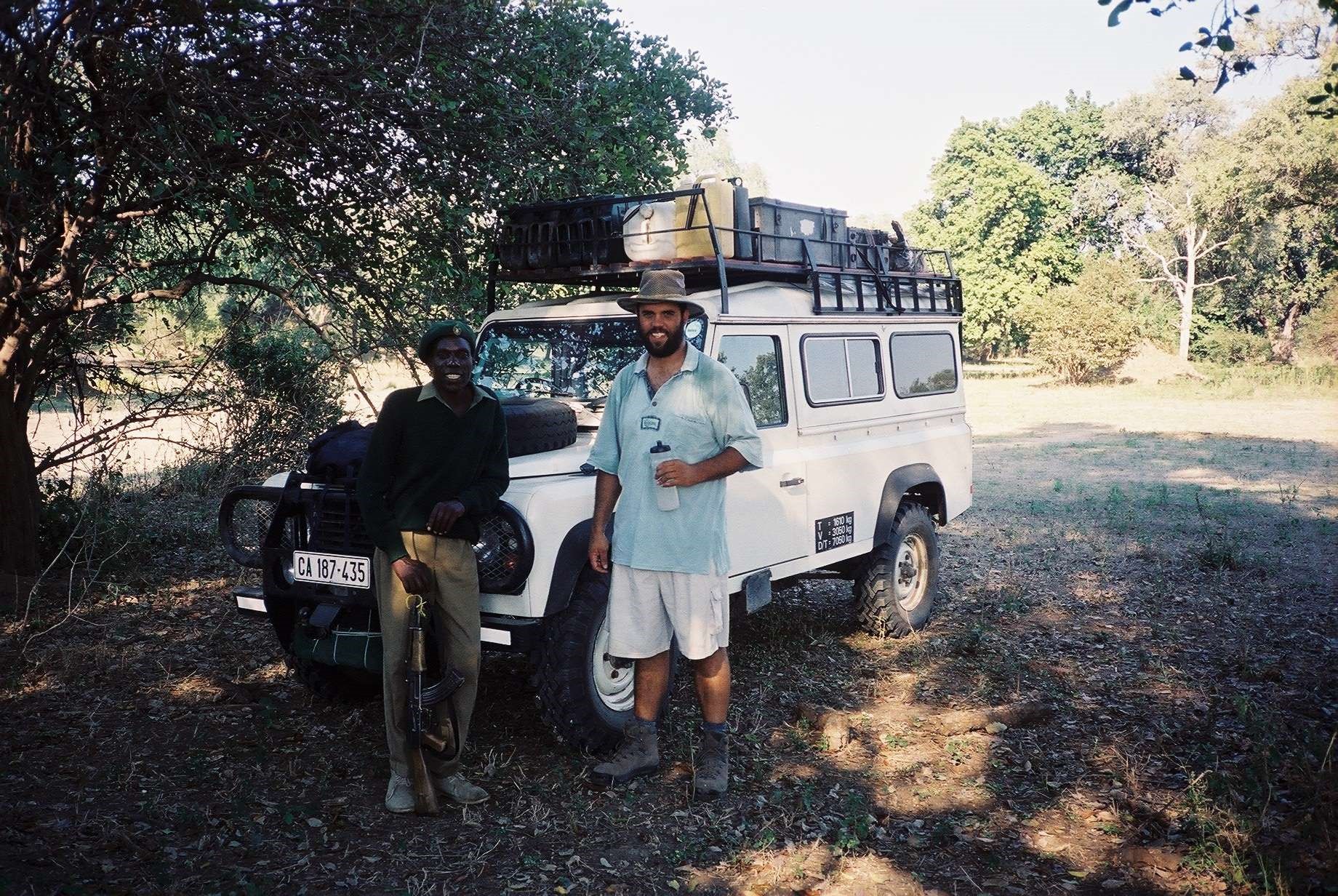
Steve and a Zambian border-post official stand in front of his Land Rover Defender during a 6-month overland trip through Africa in 2001
Andre Van Kets had completed a business and computer degree at the University of Cape Town and worked on websites during the dot-com boom. Then, with money saved and no commitments, he started travelling.
In three years he visited five continents: backpacking through Mozambique, snowboarding in the USA, exploring Europe, trekking through Thailand and living in Australia. Andre discovered what really matters to travellers when they’re planning a trip and on the move.

Andre Van Kets having fun on his worldly travels
Andre really wanted to travel in Africa. He knew how to make websites, whereas Steve knew everything about African travel and wanted to set up an online travel business. Andre had the tech skills; Steve had the African expertise.
There weren’t many online travel companies at that stage, so the duo got to work. They launched their first website Drive South Africa in 2002, offering car, 4×4 and motorhome rentals for people who wanted to explore as Steve had.
In 2006, they created Overlanding Africa, a budget safari site for the same kind of European, Australasian and North American backpackers whom Andre had met on his travels.
By the time the FIFA Soccer World Cup kicked off in South Africa in 2010, the business had grown to a well-respected company of 25 travel-loving employees.

Andre and Steve at the 2010 FIFA World Cup in South Africa
In between their work responsibilities, Steve and Andre made time to visit Africa’s most desirable destinations. They visited the Okavango Delta in Botswana, Namibia’s Skeleton Coast, Victoria Falls in Zimbabwe, the Serengeti in Tanzania, and many other African destinations – both on and off the beaten path.
Sometimes they travelled Steve-style, by Land Rover; at other times they did it Andre-style, in overland trucks. But they also started travelling in classic safari style, flying into remote luxury lodges surrounded by wildlife and wild landscapes.
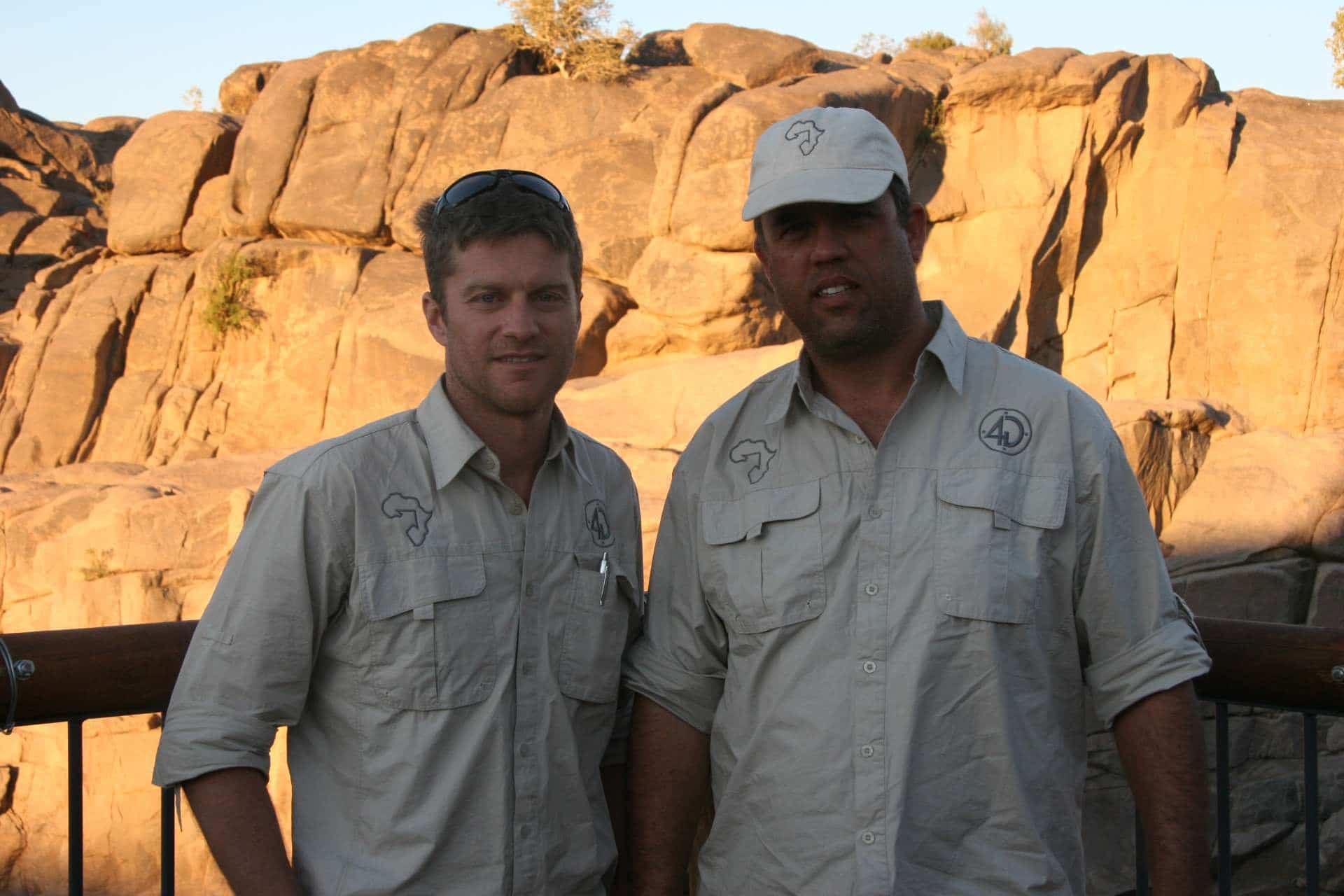
Steve and Andre, Discover Africa co-founders
It was during those trips that the vision for Discover Africa was born: a website to curate Africa’s most incredible safari experiences.
With the help of experts across the continent, Steve and Andre hand-pick tour operators and lodges that meet their strict criteria of quality, safety, ethics and value. The pair want to maintain an impeccably high standard for discerning travellers, so only carefully crafted, beautifully presented and flawlessly executed safaris make the grade.
Both Steve and Andre recognise that Africa is a unique and precious gift to humankind. As Africans bringing people from all over the world to experience this heritage, they believe it’s their duty to do so ethically and mindfully.
Why? Because everyone’s grandchildren should have the chance to discover Africa’s wonders as Steve did all those years ago.
Now that you’ve met us, we’d like the chance to meet you…!
“For as long as I can remember when I’ve been asked where is your dream destination? If you could go anywhere where would it be? I’ve always answered EVERYWHERE!”
Without further or due we are so excited to introduce our Vlogger of the month Heather Butler, AKA Chasing Everywhere. Heather chases her dreams all over the world, one country at a time. Heather loves going off the beaten path to discover interesting and exciting places to explore.
We decided to ask Heather seven carefully curated questions to find out exactly what Heather enjoyed most about her adventurous safari;
I started travelling full time and working remotely to build my digital marketing agency, The Fairway Collective, back in 2017 and originally started recording because I wanted to remember every moment.
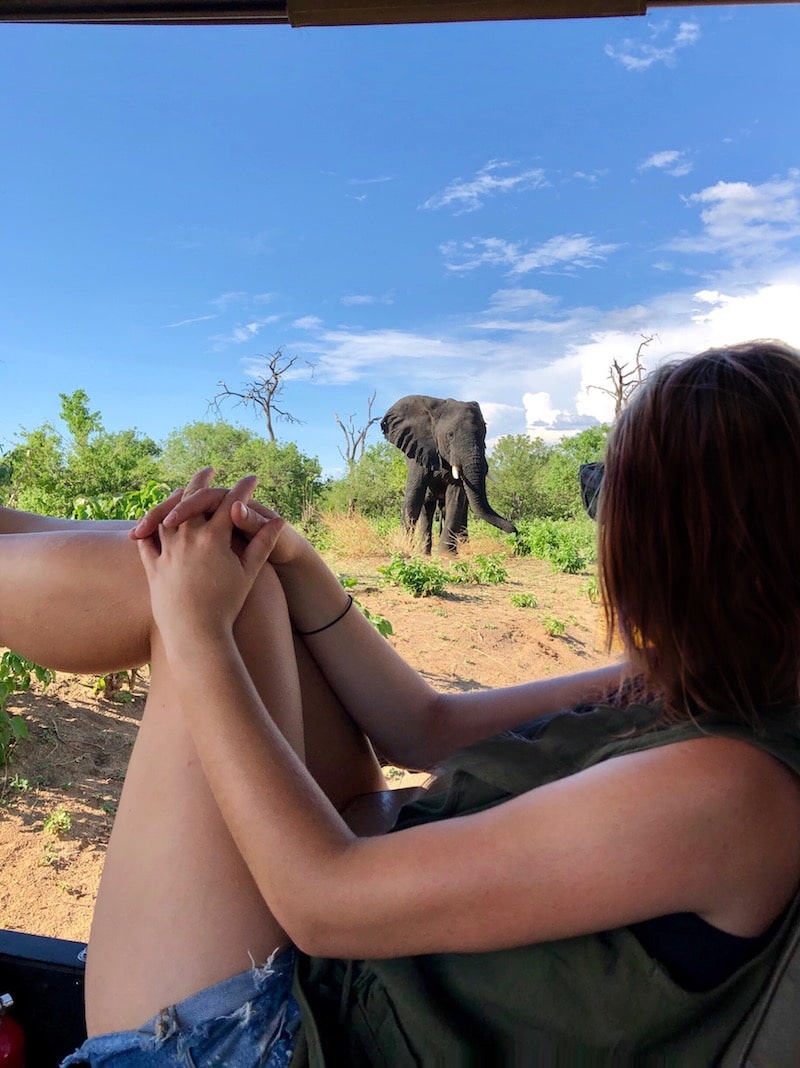
Heather enjoying her Chobe Botswana Safari | Photo credits: Heather Butler
My friends and family asked that if I was going to be recording experiences I put them online so they can see what I’m experiencing.
That’s when I started my YouTube channel, ChasingEverywhere. Suddenly I had 1000 followers, 2000, 3000 followers. So I stuck with it, creating videos of every experience, every city, every country.
Watching the baby elephants play in the water in Chobe National Park was pure and so sweet. That memory will stay with me forever.
Africa is so authentic it’s insane. I can only speak to the African countries I’ve visited but the people are kind and happy and so excited to share their lives and experiences with you.
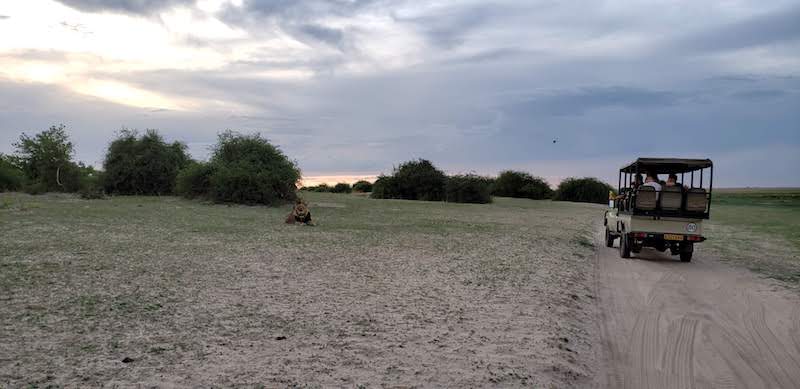
Enjoying a Safari Game Drive | Photo credits: Heather Butler
The wildlife, the culture, the energy is just so different from anywhere else I’ve ever been. It’s a magical place.
Keep an open mind, traveling in Africa, or any different country or continent, is going to be jarring and uncomfortable at times.
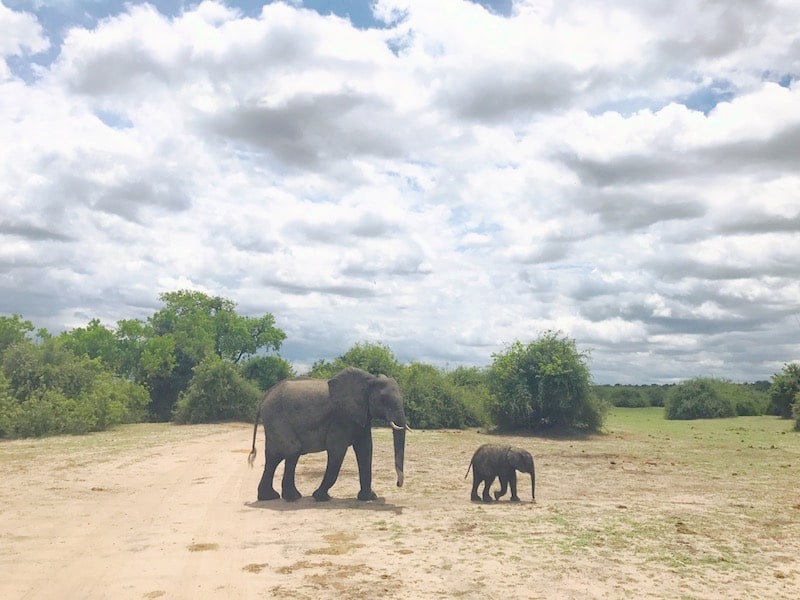
Elephant Family spotting | Photo credits: Heather Butler
Things are done differently, there are different foods, cultural differences, and levels of comfort. It’s best to experience these differences without any preconceived notions. The differences are what makes a place unique and special and you’ll have a more fulfilling experience if you embrace it.
Exploring Chobe National Park. I’ve been on safari in other countries but Chobe is something special. We were able to camp inside the park and hear the animals throughout the night.
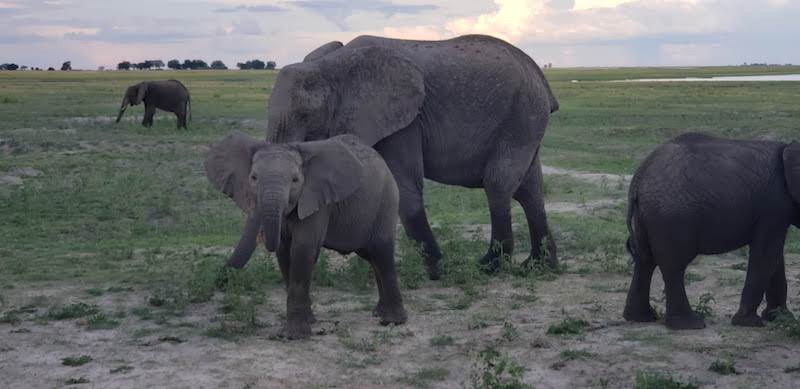
Elephant Family spotting | Photo credits: Heather Butler
We saw thousands of elephants, including newborn 2-day old calves playing in the water, a super pride of lions with cubs, and so much more! Hands down one of my favourite travel experiences ever.
We stayed at Jollyboys Backpackers hostel in Zambia and drove into Botswana, where we camped inside Chobe so I don’t have a favorite lodging inside Botswana unless you count camping in Chobe (which was absolutely amazing!).
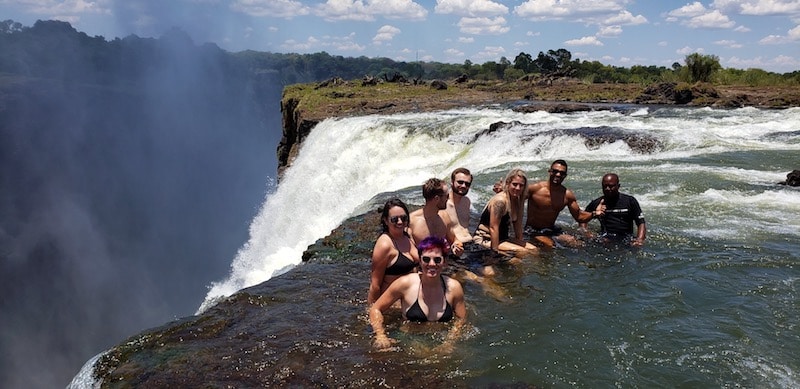
Enjoying Victoria Falls | Photo credits: Heather Butler
I’d love to visit Uganda and do a gorilla trek!
Of course! What would travel be without a few mishaps? I’ve been robbed, I’ve gotten lost, I’ve gotten super sick, I’ve been stuck on the edge of a cliff in Albania… I think the most notable was when I was not able to leave Kenya and fly to South Africa because I had not received my yellow fever vaccine.
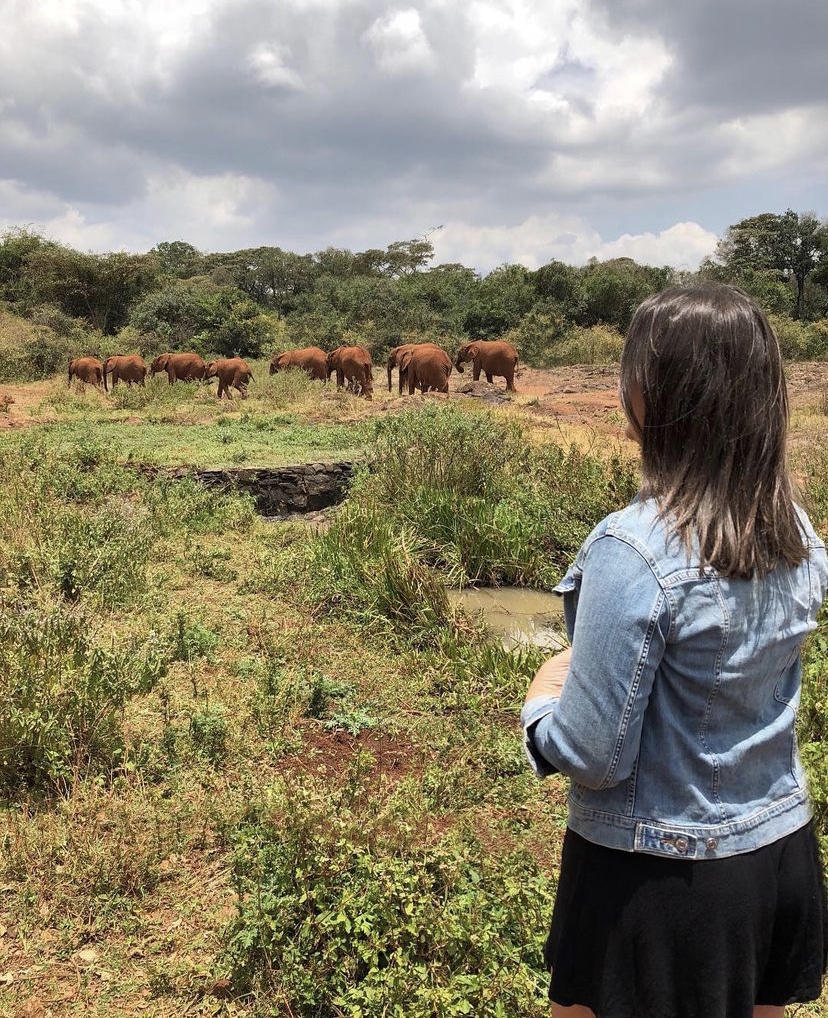
Heather enjoying her African Safari | Photo credits: Heather Butler
Every resource I checked prior to going to Kenya said I did not need the vaccine to go there, but not one document or article mentioned I would need it to leave!
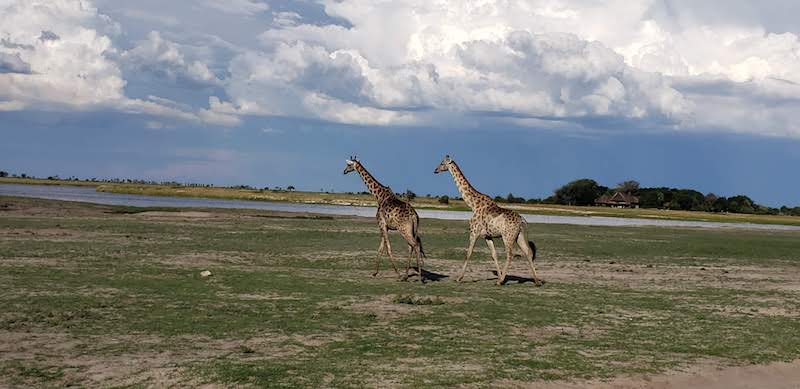
Giraffes enjoying themselves | Photo Credits: Heather Butler
When I arrived at the airport at 2 am for my 6 am flight, I was quickly informed that I could not board my flight as I needed to be vaccinated.
Luckily the airport has a clinic on-site for this exact reason and I was able to get the vaccine, wait a while, and eventually fly to my destination. The thing with travel and mishaps, is they are going to happen, even with all of the research and preparation and vigilance, things happen and that’s ok.
For more information on Heather’s amazing travels, visit her youtube or Instagram account.
If this article has intrigued you to take the next step and plan your Botswana Safari, why not have a look at the 5 best Safari lodges in Botswana?
Every gorilla born is a reason to celebrate! And Rwanda takes this seriously with its Kwita Izina festival. Rwanda’s annual gorilla naming ceremony has become a symbol of the country’s landmark efforts to bring its mountain gorilla population back from the brink of extinction.
Since 2005, this event has been on the calendar to officially name new mountain gorillas in the country’s reserves. This has become a global celebration of nature and further highlights the importance of these incredible animals.
If you’re thinking about enjoying a gorilla trekking safari, there couldn’t be a more auspicious time to plan your trip than during Kwita Izina, the gorilla naming ceremony! Here are five interesting things you should know about this celebration:
Kwita Izina is inspired by an ancient Rwandan tradition where families name their children in the presence of loved ones. This modern adaptation honours baby gorillas born in the past year, making it both a cultural and conservation milestone.
The cost of gorilla permits to see these creatures in their natural habitat, currently at $1,500 per person, is a strategic measure aimed at limiting visitor numbers while generating vital revenue. Funds raised are channelled into conservation initiatives and local community development, ensuring that the economic benefits of gorilla tourism are widely shared.
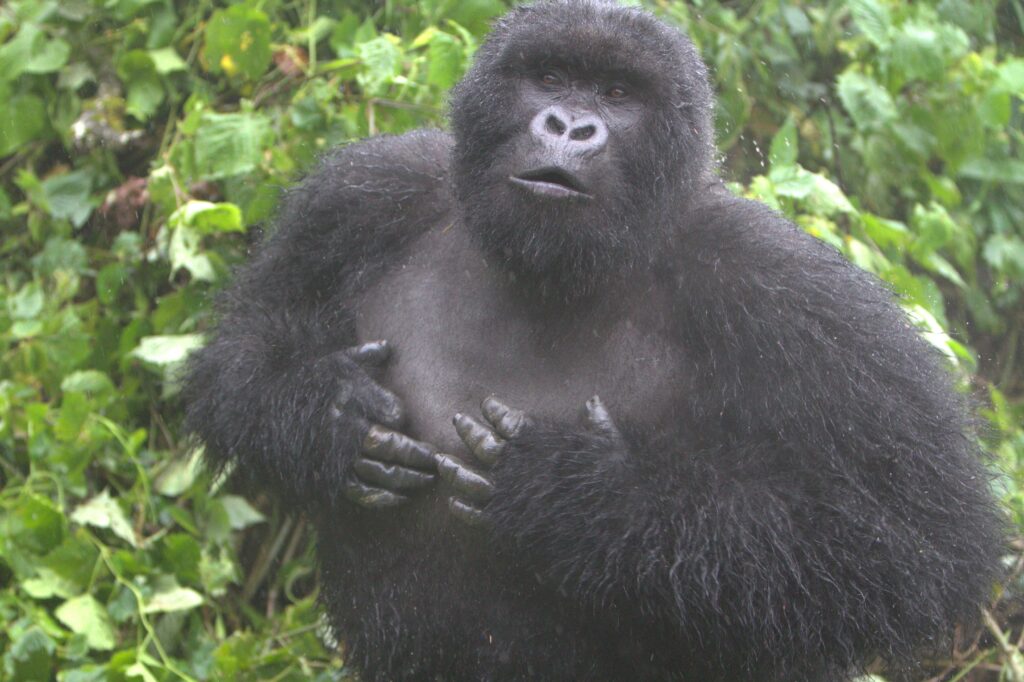
Kwita Izina has grown into an internationally celebrated event. Conservationists, park rangers, researchers, and high-profile guests gather each year to take part in naming the new baby gorillas, highlighting the importance of protecting Rwanda’s endangered mountain gorillas. Over the past 19 years, 397 gorillas have been named during this ceremony.
Thanks to Rwanda’s committed conservation efforts, including strict protection measures and sustainable tourism practices, the mountain gorilla population has grown from around 620 in 1989 to over 1,000 today. This makes them the only great ape species currently experiencing a population increase.
The gorilla naming ceremony is held annually between September and October at the foothills of Volcanoes National Park. The event brings together conservation champions and offers travellers a unique glimpse into Rwanda’s successful blend of culture, eco-tourism, and wildlife preservation. This is a fantastic time for your gorilla trekking safari.